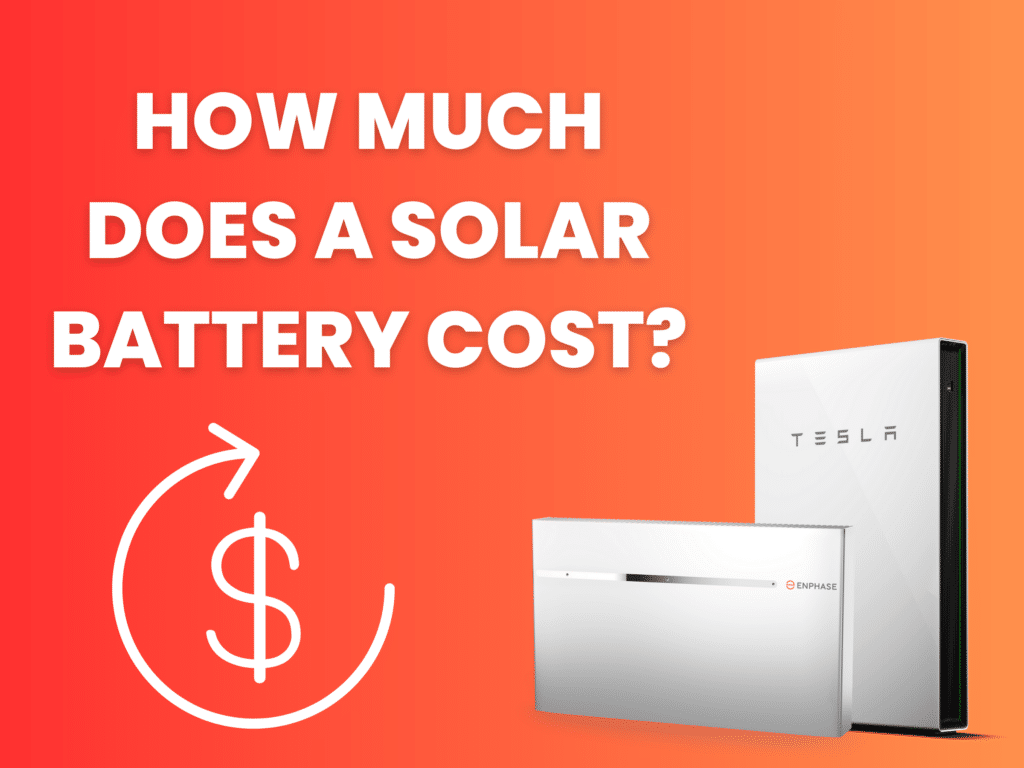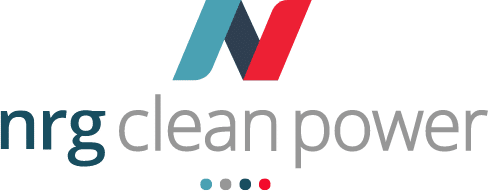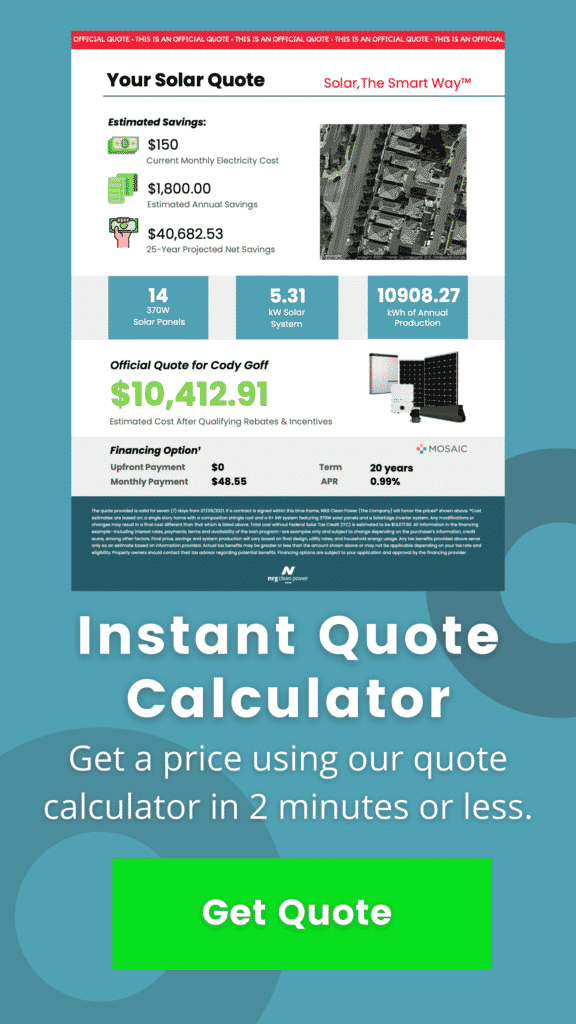
Residential solar adoption in the US experienced its fifth consecutive year of quarterly growth in 2022. There’s no doubt that more and more American homeowners are choosing to go solar, thanks to awareness and incentives like President Biden’s 30% tax credit. But is there a way solar energy can be made more reliable and grid-independent?
Solar experts would all hint at solar batteries as an answer to that question. Which, of course, begs another question,
What is a Solar Battery?
Solar batteries are a conduit for your solar panel to send any excess solar energy it produces for safe storage, much like any other battery. This energy can then be utilized at a later date or for future requirements.
Like a refrigerator stores leftovers, you can eat later, a solar battery stores excess energy that can be used to power your home when your PV panels are not at work.
From powering your home at nighttime when the sun is down to providing power in case of short/long-power failure and outage, a solar battery is a reliable source of backup power. And in doing so, it also eliminates grid dependency.
So, for grid-tied homeowners under net metering who have high Time-of-Use (ToU) rates, a solar battery can help generate savings on electricity bills during peak hours.
But all good things in life come at a cost. And solar batteries are no exception.
They are expensive and may even double the overall cost of installation, if not more, in certain scenarios.
Does investing in a solar-plus-storage system for residential use make sense even if you consider solar incentives? That’s not a question with a straightforward answer because the cost of solar batteries is variable.
How Much Does a Solar Battery Cost?
On average, solar batteries could cost anywhere from $200 to $14,000, exclusive of installation charges. That gaping disparity is due to several factors listed below, in no particular order of importance.
Type of the Battery
Based on their chemistry, solar batteries can be of four types:
- lead-acid batteries (sealed and flooded);
- lithium-ion batteries;
- flow batteries, and
- nickel-cadmium batteries.
Lead-acid batteries are the cheapest of the lot and cost anywhere between $300-$400. However, these are the oldest variations with low depth of discharge. So even though they’re cheap, they won’t be able to power high-energy appliances and will also not go the mile.
You will also need way more lead-acid batteries to power your home than you would any other type of battery.
On the other hand, lithium-ion batteries are low maintenance and high performing but one of the most expensive solar batteries out there. Flow batteries, although relatively new, are fairly efficient too, but also cost more than lead-acid ones.
So the type of solar battery you choose determines its cost as well as its utility.
Quality
The quality of a solar battery directly impacts its performance and, therefore, also its price. That’s why a high-performing lithium-ion battery, which is most commonly used in residential solar setups, costs more than a lead-acid battery.
Another factor that comes into play is the battery capacity. It goes without saying that batteries with higher capacities will cost you more.
Number of Batteries Needed
According to EIA’s estimates, American homes consume 29.53kWh of electricity in a day. Adding a 1.25% margin of safety, any backup power storage system should be capable of providing at least 36.91kWh of electricity to power your home uninterrupted for a day.
Given that solar battery capacity varies from 1kWh to 10kWh, you will need multiple batteries to create 100% backup capacity which obviously will increase your overall solar battery costs in the short and long term.
And the more batteries you need, the more you must pay.
Although innovative solutions, like flow batteries eliminate the need for multiple batteries, even these cost $800 and upward for every kWh of electricity supplied!
Solar Batteries Installation Costs
Another crucial factor to consider is the installation cost of solar batteries. If you have a pre-existing PV setup that you want to augment with a solar battery, you will need to retrofit it. That entails significant labor charges because any electrical installation is effort and time intensive.
In case you want a solar-cum-storage setup when you decide to go solar, you can get your solar array and battery installed at once. Of course, the labor charges you pay will be lower than if you were to do it later.
Even then, you will still spend $0.59 per watt of capacity for your overall solar setup and may incur a bill of a few thousand dollars depending on the capacity installed.
At times homeowners may overlook the need for home repairs before going solar. For example, your house may need electrical repair or a roof replacement – all of that can add to the cost of getting a solar-plus-storage array at home.
Solar Battery Manufacturer
Some manufacturers go for the kill with high-end solar batteries that are very expensive, like the Sonnen EcoLinx model, which is priced at $36,000 for 12kWh capacity. Then there are others, like Tesla Powerwall, that are far more affordable yet score high on performance.
Depending on the manufacturer you choose, the price of your solar battery will swing from being affordable to not-so-affordable.
So it’s hard to conclusively estimate how much a solar battery will cost you without accounting for these variables. That said, under no circumstances do solar batteries come cheap. Therefore you need to do your research before investing in one.
Is A Solar Battery Worth the Investment?
That depends on your immediate requirements.
In most cases, those going solar to save on electricity bills can do without a battery, especially if their jurisdiction has a net metering plan in place. Grid-tied users can still significantly save on their electricity bill if their utility company pays them for surplus electricity at the full retail rate. If not, going grid-free with solar batteries is a financially more rewarding alternative.
But if you’re an eco-conscious homeowner who wants to live off the grid, you certainly need a battery. However, in such cases, you will also need an inverter. That’s because a solar battery cannot provide AC electricity; it only stores power in DC. You will need an inverter to power your home appliances, all of which work on AC.
Since nothing comes for free, you must carefully budget your solar setup costs before taking the plunge.
Another scenario where a solar battery comes in handy is if you experience frequent power outages. For homeowners who do not have the luxury of enjoying an uninterrupted power supply all day every day, a solar-plus-storage setup can be a lifesaver.
Similarly, if you live in an area prone to natural disasters like tornados and torrential rain that disrupt the power supply, a solar backup could be a smart idea.
To sum it up, if you’re a residential solar user considering investing in a solar battery, research and carefully weigh the pros and cons of the model you’re interested in
Investing in a solar battery could reap you long-term benefits and help you future-proof your home against power disruptions.
What better ROI you can ask for!
Check out our solar battery recommendations with the top 5 solar batteries of 2023!

Authored by Ryan Douglas
NRG Clean Power's resident writer and solar enthusiast, Ryan Douglas covers all things related to the clean energy industry.


